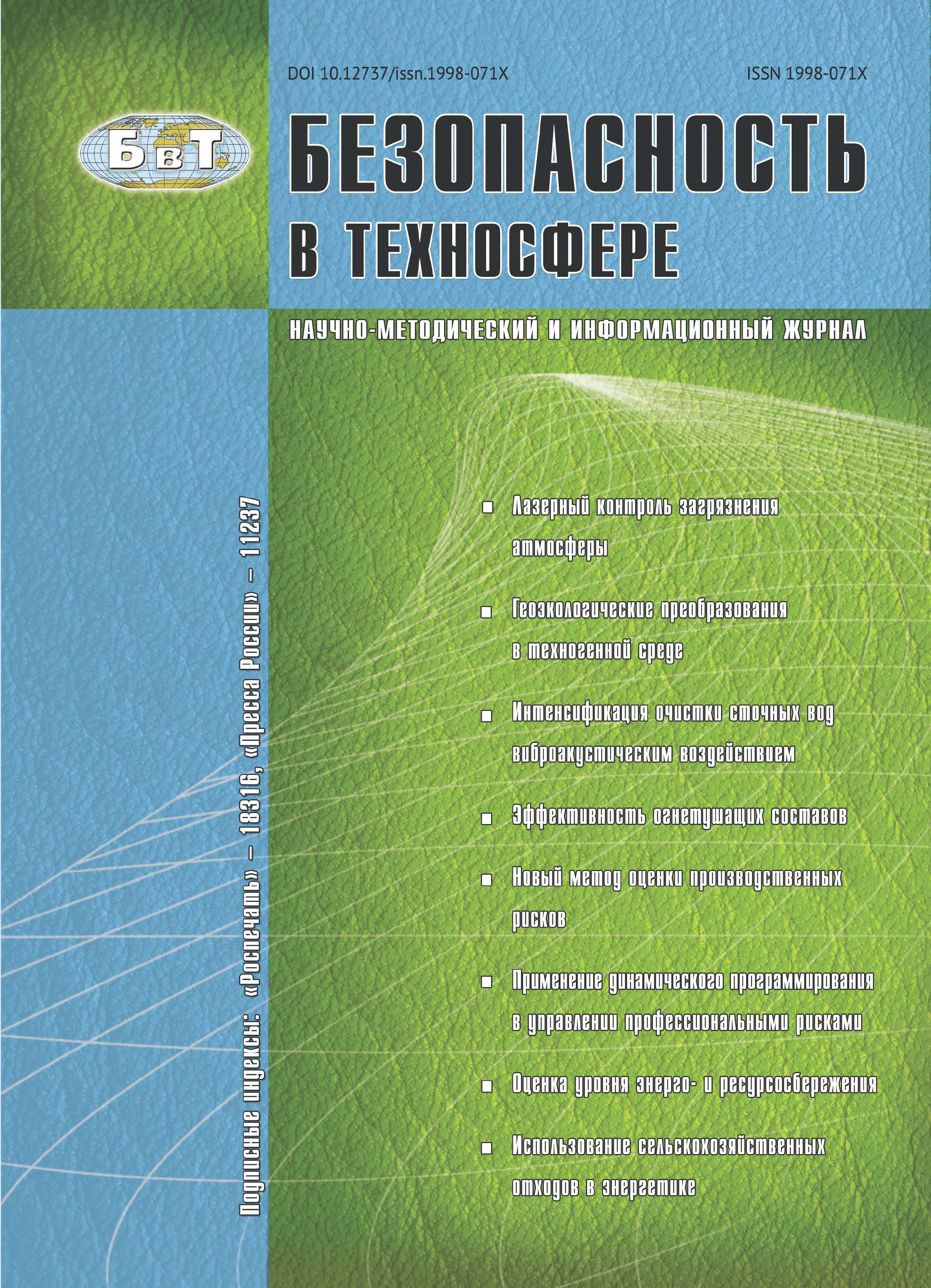Russian Federation
A review of modern phytoremediation technologies for rehabilitation of mining industry complexes’ industrially loaded territories has been reported. The wastewater phytoremediation technologies for gold producing mills, enterprises for copper ores extraction and processing have been presented. Practical recommendations on phytoremidiation facilities design have been given. The selection of water plants and algae for planting in bioengineering systems of wastewater treatment, suitable for application in severe climate conditions of East Siberia and South Ural has been performed.
phytoremediation, wastewater, mining industry complex, heavy metals, cyanides, water plants, algae.
1. Введение в проблему
Горнопромышленный комплекс России является важнейшим базовым элементом народного хозяйства, поставщиком минерального сырья и топлива. По запасам и добыче многих видов полезных ископаемых Россия входит в число мировых лидеров, что определяет добычу и переработку руд как стратегическое направление экономики нашей страны. В настоящее время Россия входит в число пяти мировых лидеров горнорудной промышленности (наряду с Чили, Австралией, Южной Африкой и Канадой).
1. Vozdeistvie gornogo proizvodstva na okruzhayushchuyu sredu [Impact of mining on the environment]. Available at: http://www.ref.by/ refs/97/22423/1.html (accessed 11 January 2017) (in Russian).
2. Sokolov I. V. Kompleks kharakteristik ekologicheskoi bezopasnosti pri dobyche poleznykh iskopaemykh [Complex of characteristics of ecological safety when mining]. Available at: http://www.sworld.com.ua/konfer27/676.p (accessed 11. January 2017) (in Russian).
3. Magmedov V. G. Osnovnye tipy vodookhrannykh sooruzhenii, ispol’zuyushchie ochistnye svoistva soobshchestv makrofitov [The main types of the water preserving constructions using clearing properties of communities of makrofit]. Vodnye resursy [Water resources]. 1988, I. 2, pp. 150-155 (in Russian).
4. Stoyanov A. V., Sobgaida N. A., Ol’shanskaya L. N. Vliyanie lazernogo izlucheniya na protsessy fitoremedia-tsiimedi iz stochnykh vod eikhorniei [Influence of laser radiation on processes of a fitoremediation of copper of sewage eykhorniya]. Khimicheskoe i neftegazovoe mashinostroenie [Chemical and oil and gas mechanical engineering]. 2010, I. 6, pp. 38-41 (in Russian).
5. Dipu S., Anju A., Kumar V. and Thanga Salom Gnana. Phytoremediation of Dairy Effluent by Constructed Wetland Technology Using Wetland Macrophytes. The Environmentalist, 2011, vol. 3, no. 31, pp. 263-278.
6. Abdel-sabour M. F. Recycling and Environment consultant, Water hyacinth: available and renewable resource. Agricultural and Food Chemistry, 2010, vol. 11, no. 9, pp. 1746-1759.
7. Timofeeva S. S., et al. Treatment of sewage containing aromatic amines with participation of macrophytes. Acta hydrochim. hydrobiol. Part 1. 1987. Bd. 15. Hf. 6. Pp. 611- 622; Part 2. 1988. Bd. 16. Hf. 1. Pp. 73-80.
8. Timofeeva S. S., Timofeev S. S. Sistemy s vysshei vodnoi rastitel’nost’yu dlya ochistki stochnykh vod [Systems with the highest water vegetation for sewage treatment]. Voda magazine [Water Magazine]. 2011, I. 10 (50), pp. 56-60 (in Russian).
9. Akpor O. B., Muchie M. Remediation of heavy metals in drinking water and wastewater treatment systems: Processes and applications. International Journal of the Physical Sciences, 2010, vol. 12, no. 5, pp. 1807-1817.
10. Azeez N., Sabbar A. A. Efficiency of duckweed (Lemna minor L.) in phytotreatment of wastewater pollutions frombasrah oil refinery. Journal of Applied Phtotechnology in Environmental Sanitation, 2012, vol. 4, no. 1, pp. 163-172.
11. Timofeeva S. S., Kraeva V. Z., Men’shikova O. A. Rol’ vodoroslei i vysshikh vodnykh rastenii v obezvrezhivanii tsianidsoderzhashchikh stochnykh vod [Role of seaweed and the higher water plants in neutralization the tsianidsoderzhashchikh of sewage]. Vodnye resursy [Water resources]. 1985, I. 6, pp. 111-116 (in Russian).
12. Timofeeva S. S., Men’shikova O. A. Ispol ’zovanie makrofitov dlya intensifikatsii biologicheskoi ochistki rodanidsoderzhashchikh stochnykh vod [Use of makrofit for an intensification of biological cleaning the rodanidsoderzhashchikh of sewage]. Vodnye resursy [Water resources]. 1985, I. 6, pp. 80-85 (in Russian).
13. Timofeeva S. S., Rusetskaya G. D. Rol’ makrofitov v obezvrezhivanii flotoreagentov [Role of makrofit in neutralization of flotoreagent]. Vodnye resursy [Water resources]. 1989, I. 4, pp. 187-194 (in Russian).
14. Ranzhirovannyi perechen’ nailuchshikh dostupnykh tekhnologii po ochistke zagryaznennykh territorii i likvidatsii nakoplennogo ekologicheskogo ushcherba [The ranged list of the best available technologies for cleaning of the polluted territories and elimination of the saved-up ecological damage]. Available at: http:// www.zubstom.ru/docs/ index-12701.html (accessed 25. February 2016) (in Russian).
15. Batoeva A. A. Razrabotka tekhnologicheskikh reshenii po minimizatsii tekhnogennogo vozdeistviya na okruzhayushchuyu sredu predpriyatii po dobyche i pererabotke rudnogo zolota [Development of technology solutions on minimization of technogenic impact on the environment of the enterprises for production and processing of ore gold]. Ulan-Ude, Baikal’skii institut prirodopol’zovaniya Sibirskogo otdeleniya RAN Publ., 2014. 99 p (in Russian).
16. Laskorin B. N., Barskii L. A., Persits V. Z. Bezotkhodnaya tekhnologiya pererabotki mineral’nogo syr’ya [Wastefree technology of processing of mineral raw materials]. Moscow, Nedra Publ., 1984, 334 p (in Russian).
17. Ul’rikh D.V., Bryukhov M. N., Timofeeva S. S., Denisov S. E. System of sewage treatment (options). Patent of the Russian Federation no. 2572577. (In Russian).. (in Russian)






